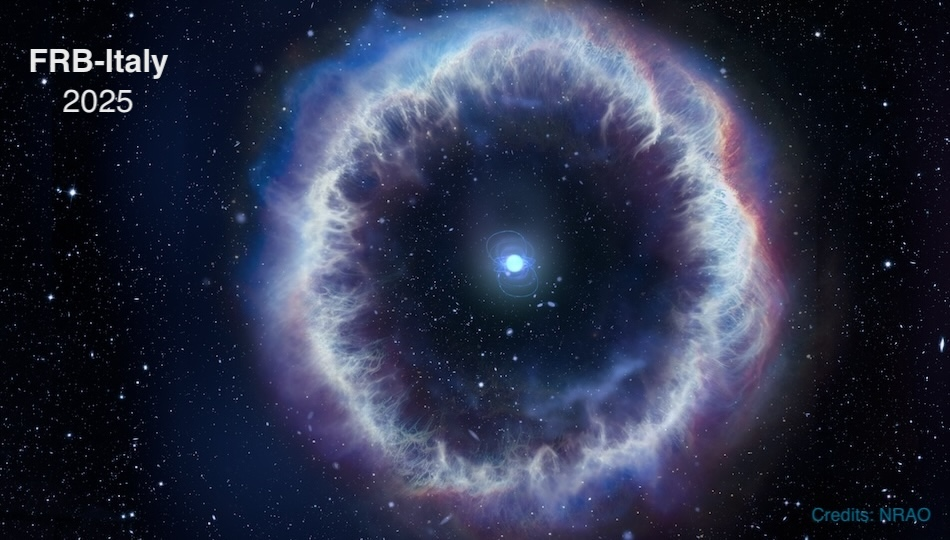INAF manages three single-dish radio telescopes: SRT, Medicina, Noto. The science of pulsars and Fast Radio Bursts constitutes key projects in radio astronomy. SRT already plays a key role in various projects, such as the EPTA, which uses radio pulsar data to search for gravitational waves. Currently-available instrumentation at SRT severely limits its possible scientific return. At Medicina...
The discovery of fast radio bursts (FRBs) was a serendipitous process, much like the detection of the first pulsar by S. J. Bell. Since the first FRB was identified in 2007, both hardware and software technologies for detecting these enigmatic transients have advanced dramatically, enabling the discovery of increasingly exotic events. In this talk, I will review the current state of FRB...
A number of models predict the existence of multiwavelength (MWL) counterparts of Fast Radio Bursts (FRBs) in the form of an afterglow or an impulsive event. An optical detection would provide critical information on the nature of the progenitor and would greatly enhance our understanding of the FRB phenomenon. Suitable instrumentation and/or strategies are required for sensitive searches of...
The long unexplored fast optical sky is now accessible thanks to new large ground-based telescopes and new generation instruments. Studying it may lead to new discoveries, but it is also challenging due to optical pollution.
In this talk, I will present our preliminary results obtained from an automated search and characterisation of mysterious Fast (millisecond) Optical Bursts (FOBs) in over...
Magnetar giant flares (MGFs) are the most extreme transient events observed from these magnetically-powered neutron stars. They consist of an initial peak lasting fractions of a second during which the luminosity in the X and soft $\gamma$ band can reach up to 10$^{47}$ erg s$^{-1}$, followed by a decaying X-ray tail lasting hundreds of seconds and showing periodic modulation.
The periodic...
The Northern Cross is a T-shaped radio interferometer located at the Medicina station, near Bologna, operating at 408 MHz. It has been undergoing a significant refurbishment/restoration over the last few years, allowing observations of fast radio bursts (FRBs, a project named "Northern Cross FRB project"). In this talk I will review the status of the project (past and current observing...

